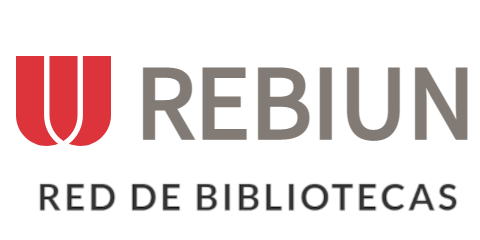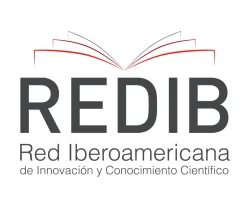Preserving Tradition and Promoting Innovation: “Quesillo,” Artisanal Cheese from Oaxaca, Mexico
Resumen
The quesillo is a traditional food originally produced in the state of Oaxaca, Mexico, is fresh, spun paste or strands, made with raw milk and has unique sensory attributes due to its extensive native microbiota, mainly lactic acid bacteria, which are fermenting microorganisms, safe, are used in the fermentation and preservation of food helping to improve flavor, aroma, and texture. They are part of the natural microbiota of raw milk and its derivatives, mainly traditional cheeses, where the greatest diversity and heterogeneity is found. The objective of this study was to microbiologically identify lactic acid bacteria (LABs) present in the traditional quesillo of Oaxaca, Mexico. Quesillo samples were collected in three municipalities in Oaxaca, Mexico. Serial dilutions were prepared from 10 g of sample, then seeded in a Man, Rogosa, and Sharpe (MRS) selective medium. Subsequently, they were incubated at 30 °C for 24 to 48 h. The strains were identified macroscopically and microscopically, catalase and oxidase tests were performed as confirmation tests for LAB. From the three traditional quesillo samples, 86 colonies with BAL macroscopic morphology were identified, strains with yeast morphology, coccobacillary, catalase and oxidase positive were discarded, and finally 56 strains were identified with macroscopic and microscopic characteristics of LAB type, gram positive, bacillary and coccobacillary morphology, catalase and oxidase negative. In conclusion, quesillo is a traditional product that presents lactic acid bacteria as important microorganisms, which, in addition to improving sensory attributes and food preservation, can present probiotic properties that when administered in adequate amounts confer a health benefit to the host.
Descargas
Citas
Arena MP, Capozzi V, Russo P, Drider D, Spano G, Fiocco D. Immunobiosis and probiosis: antimicrobial activity of lactic acid bacteria with a focus on their antiviral and antifungal properties. Appl Microbiol Biotechnol. 2018; 102: 9949-58.
Ashaolu TJ, Reale A. A Holistic Review on Euro-Asian Lactic Acid Bacteria Fermented Cereals and Vegetables. Microorganisms. 2020; 8(8): 1176.
Camacho-Vera JH, Cervantes-Escoto F, Cesín-Vargas A, Palacios-Rangel MI. Artisanal foods and food modernity. Estud Soc Rev Aliment Contemp Desarro. 2019; 29(53): 2-20.
Caro I, Mateo J, Sandoval MH, Soto S, García-Armesto MR, Castro JM. Characterization of Oaxaca raw milk cheese microbiota with particular interest in Lactobacillus strains. J Dairy Sci. 2013; 96(6): 3461-70.
Cervantes F, Islas-Moreno A, Camacho-Vera JH. Innovating Mexican traditional cheese without losing craftsmanship and genuinity. Estud Soc Rev Aliment Contemp Desarro. 2019; 29(54): 4-18.
Coelho MC, Malcata FX, Silva CCG. Lactic acid bacteria in raw-milk cheeses: From starter cultures to probiotic functions. Foods. 2022 Jul 29;11(15):2276.
FAO. Probiotics in food. Health and nutritional properties and guidelines for evaluation. 2006. Available in. Accessed on: 28/02/2024.
https://www.fao.org/3/a0512s/a0512s.pdf
Goa T, Beyene G, Mekonnen M, Gorems K. Isolation and characterization of lactic acid bacteria from fermented milk produced in Jimma Town, Southwest Ethiopia, and evaluation of their antimicrobial activity against selected pathogenic bacteria. Int J Food Sci. 2022; 2022: 2076021.
Kim SK, Guevarra RB, Kim YT, Kwon J, Kim H, Cho JH, Kim HB, Lee JH. Role of probiotics in human gut microbiome-associated diseases. J Microbiol Biotechnol. 2019; 29(9): 1335-40.
Mathur H, Beresford TP, Cotter PD. Health benefits of lactic acid bacteria (LAB) fermentates. Nutrients. 2020; 12(6): 1679.
Miranda C, Contente D, Igrejas G, Câmara SPA, Dapkevicius MLE, Poeta P. Role of exposure to lactic acid bacteria from foods of animal origin in human health. Foods. 2021; 10(9): 2092.
Mokoena MP. Lactic acid bacteria and their bacteriocins: Classification, biosynthesis and applications against uropathogens: A mini-review. Molecules. 2017; 22(8): 1255.
Patiño-Delgado AL, Cervantes-Escoto F, Espinoza-Ortega A, Palacios-Rangel MI, Cesín-Vargas A. Strategies of microenterprises dedicated to the elaboration of artisan cheese in the tropic of Mexico. Estudios Gerenciales. Journal of Management and Economics for Iberoamerica. 2022; 38(164): 294-307.
Reuben RC, Roy PC, Sarkar SL, Rubayet Ul Alam ASM, Jahid IK. Characterization and evaluation of lactic acid bacteria from indigenous raw milk for potential probiotic properties. Journal of Dairy Science. 2020; 103(2): 1223-37.
Roldán-Pérez S, Gómez Rodríguez SL, Sepúlveda-Valencia JU, Ruiz Villadiego OS, Márquez Fernández ME, Montoya Campuzano OI, Durango-Zuleta MM. Assessment of probiotic properties of lactic acid bacteria isolated from an artisanal Colombian cheese. Heliyon. 2023; 9(11): e21558.
Rolim FRL, Freitas-Neto OC, Oliveira MEG, Oliveira CJB, Queiroga RCRE. Cheeses as food matrixes for probiotics: In vitro and in vivo tests. Trends in Food Science & Technology. 2020; 100: 138-54.
Santander-Cortés AI, Castro-Rosas J. Isolation of lactic acid bacteria with probiotic potential from typical fermented Mexican food: a review. Pädi Boletín Científico de Ciencias Básicas e Ingenierías del ICBI. 2024; 11(22): 59-68.
Soemarie YB, Milanda T, Barliana MI. Fermented Foods as Probiotics: A Review. J Adv Pharm Technol Res. 2021; 12(4): 335-9.
Terzić-Vidojević A, Veljović K, Tolinački M, Živković M, Lukić J, Lozo J, Fira Đ, Jovčić B, Strahinić I, Begović J, Popović N, Miljković M, Kojić M, Topisirović L, Golić N. Diversity of non-starter lactic acid bacteria in autochthonous dairy products from Western Balkan Countries-Technological and probiotic properties. Food Res Int. 2020; 136: 109494.
Villanueva-Carvajal A, Esteban-Chávez M, Espinoza-Ortega A, Arriaga-Jordán CM, Dominguez-Lopez A. Oaxaca cheese: flavour, texture and their interaction in a Mexican traditional pasta filata type cheese. CyTA-Journal of Food. 2012; 10(1): 63-70.
Villegas de Gante A, de la Huerta-Benítez R. Nature, evolution, contrasts, and implications of imitations of genuine Mexican cheeses. Estudios Sociales. 2015; 23(45): 214-36.
Villegas GA. Los quesos mexicanos tradicionales. Universidad Autónoma Chapingo.: Juan Pablos Editor. 2016.
Wang Y, Wu J, Lv M, Shao Z, Hungwe M, Wang J, Bai X, Xie J, Wang Y, Geng W. Metabolism Characteristics of Lactic Acid Bacteria and the Expanding Applications in Food Industry. Front Bioeng Biotechnol. 2021; 9: 612285.
Derechos de autor 2024 Danae Alicia Martínez Martínez, Alma Dolores Pérez Santiago, Marco Antonio Sánchez Medina, Iván Antonio García Montalvo, Diana Matía Pérez, Carlos Francisco Varapizuela Sánchez, Emilio Hernández Bautista

Esta obra está bajo licencia internacional Creative Commons Reconocimiento 4.0.













.png)




















.png)
1.png)


